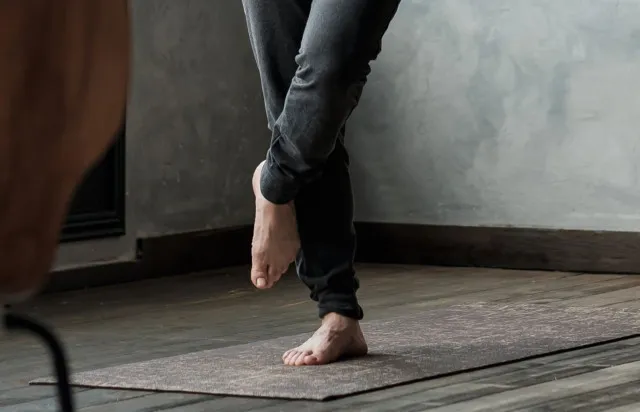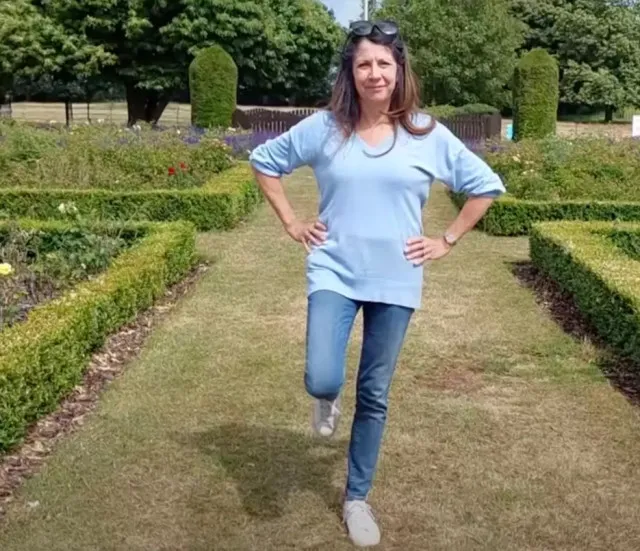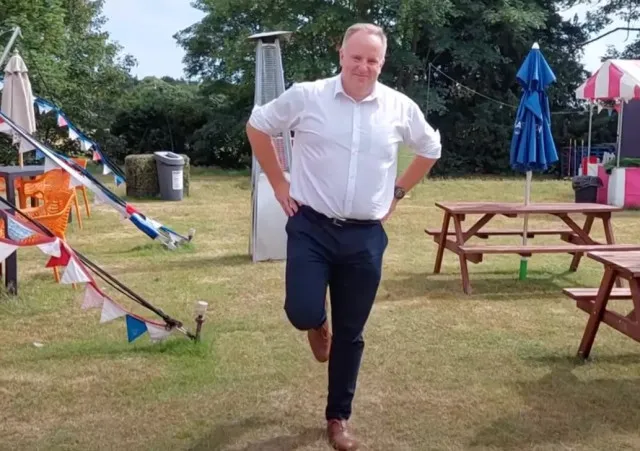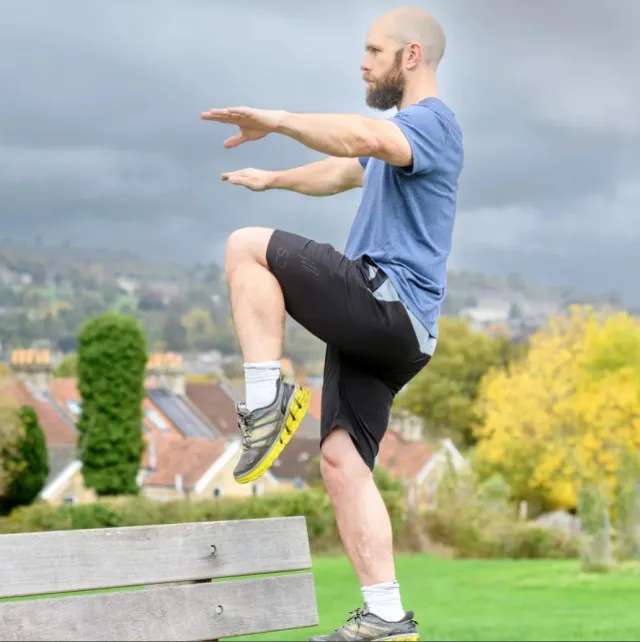Balancing on one leg might sound like a simple feat, but recent research suggests it can reveal a lot about your health. A straightforward test, requiring just 10 seconds on one leg, may offer insights into your overall health status and predict long-term health risks. Known as the “flamingo challenge,” this test has gained attention as a possible indicator of life expectancy, particularly as we age.
Could a quick balance test really reveal your chances of survival over the next decade? Let’s explore what experts say, how to perform the test, and why it matters.
What Is the One-Leg Balance Test?

The one-leg balance test is exactly what it sounds like. You stand on one leg with your hands on your hips and attempt to maintain your balance for 10 seconds. Sounds easy, right? Not for everyone. Research published in the British Journal of Sports Medicine suggests that adults who struggle to balance for 10 seconds are twice as likely to die within the next 10 years from various causes.
As simple as it seems, the test challenges your body’s stability, coordination, and muscle strength—all key indicators of health, especially in older adults. Your ability to hold your balance on one leg offers a glimpse into your physical resilience, highlighting areas that might need attention as you age.
How to Perform the One-Leg Balance Test
Performing the one-leg balance test is easy and can be done anywhere, making it accessible for everyone:
- Stand with your feet together and place your hands on your hips.
- Lift your dominant leg a few inches off the ground, bending your knee slightly.
- Try to hold this position for as long as possible, ideally for 10 seconds or more.
- Repeat the test on the other leg to check for any imbalances in stability.
If you’re unable to hold the position for the recommended time, it might be an early warning sign to focus on improving your balance and strength.
What Do Your Results Mean?
Your balance ability can decline with age, which is natural. However, consistently failing to meet the recommended balance time for your age group could indicate potential health risks. Here are the general balance time benchmarks provided by the UK’s National Health Service (NHS):
- Ages 18-39: Around 43 seconds
- Ages 40-49: Around 40 seconds
- Ages 50-59: Around 37 seconds
- Ages 60-69: Around 27 seconds
- Ages 70-79: About 18 seconds
- Over 80: Just over 5 seconds
If you’re significantly below these benchmarks, it might be worth paying attention to your physical fitness and overall health.
The Link Between Balance and Mortality
So, how does standing on one leg connect to longevity? Balance requires multiple systems in the body to work together, including muscles, joints, vision, and the vestibular (inner ear) system. As we age, these systems naturally decline, making it harder to maintain balance. Poor balance, in turn, can lead to falls, which are a major risk for older adults. According to the Centers for Disease Control and Prevention (CDC), falls are a leading cause of injury and death in people over 65.
A compromised sense of balance might be a sign of deteriorating physical health, lower muscle strength, and impaired coordination, which are all linked to reduced life expectancy. The study published in the British Journal of Sports Medicine supports this connection, suggesting that adults who fail the 10-second balance test may face double the risk of death over the next decade.
Why Balance Declines with Age

As we grow older, our balance naturally becomes less reliable due to several factors:
- Muscle Loss: After age 30, muscle mass begins to decline, affecting strength and stability.
- Joint Stiffness: Joints lose flexibility over time, impacting coordination and balance.
- Declining Vision: Vision contributes to balance by helping you understand spatial orientation, and it weakens as we age.
- Vestibular System Changes: The inner ear system, essential for balance, also degrades with age, leading to dizziness and balance issues.
While balance decline is natural, it doesn’t mean it’s inevitable. Regular exercise, especially balance-focused activities, can help you maintain stability and reduce the risk of falls.
Improving Your Balance and Health: The Importance of Exercise
Struggling with the one-leg balance test? Don’t worry; there are steps you can take to improve your balance and, in turn, your long-term health. Selina Lim, Divisional Director at the NHS East Suffolk and North Essex NHS Foundation Trust, emphasizes the importance of incorporating balance exercises into your routine.

Activities like yoga, tai chi, and simple exercises at home can enhance your ability to balance, strengthen muscles, and improve coordination. Lim notes, “People who struggle to maintain balance for the recommended time may be at greater risk of health problems. By participating in balance exercises, individuals can take proactive steps to improve their physical fitness.”
Why Regular Physical Activity is Crucial for Balance
Debbie Dyer, Clinical Lead for Ageing Well and Anticipatory Care, advocates for regular physical activity to enhance balance and overall well-being. Dyer points out that exercise not only helps physical health but also has a positive effect on mental wellness. Leading an active lifestyle keeps you strong, agile, and mentally sharp, increasing your chances of aging independently and in good health.
Dyer highlights, “We all hope to live independently as we get older, and maintaining an active lifestyle plays a crucial role in improving our chances of doing just that. Regular movement is excellent for mental health and a great way to engage with the community.”
Simple Exercises to Boost Your Balance
If you want to improve your balance, consider adding these exercises to your routine:
- Heel-to-Toe Walk: Walk in a straight line, placing the heel of one foot directly in front of the toes of the other. This improves coordination and balance.
- Single-Leg Stand: Practice standing on one leg, gradually increasing the duration as you get better. You can hold onto a chair for support initially.
- Side Leg Raises: While standing, lift one leg to the side, holding it in the air for a few seconds before lowering it. This strengthens the muscles around your hips and improves stability.
- Tai Chi or Yoga: Both practices incorporate balance-focused movements and can be adapted to all fitness levels, making them ideal for balance improvement.
- Marching in Place: This exercise may sound simple, but lifting each knee high and alternating can help strengthen your core and legs, essential for better balance.
These exercises require minimal equipment and can be done at home, making it easy to integrate them into your daily life.
Aging Gracefully with Balance and Strength

Maintaining balance as you age is not just about avoiding falls; it’s also about retaining independence, mobility, and a high quality of life. Strengthening your muscles, improving flexibility, and honing coordination all contribute to graceful aging. Dyer encourages everyone, regardless of age, to incorporate movement into their day-to-day lives, as it leads to better mental health, physical strength, and long-lasting balance.
Conclusion: The One-Leg Balance Test as a Health Indicator
The one-leg balance test may seem simple, but it’s a powerful tool for assessing overall health. Struggling with this test could indicate underlying health risks, reminding you of the importance of balance and physical fitness. While balance declines naturally with age, incorporating regular exercise, strength training, and balance practices can help preserve it.
If you found the test challenging, consider adding balance exercises to your routine and staying physically active to support your health as you grow older. By focusing on balance today, you’re investing in a healthier, more independent tomorrow.


